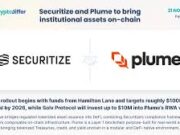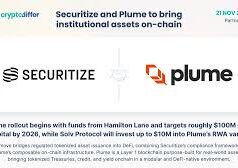If you thought the crypto bull run was all champagne and Lamborghinis, think again. Just as more companies pile into Bitcoin and Ethereum as if they were the ultimate retirement assets, regulators at the SEC (Securities and Exchange Commission) and FINRA (Financial Industry Regulatory Authority) are stepping in to cool the frenzy. According to a Wall Street Journal report on September 25, 2025, both agencies are investigating more than 200 firms over suspicious stock activity that occurred right before those firms announced plans to raise funds for crypto treasuries (Wall Street Journal).
We’re talking about potential insider trading, leaked memos, and more than $102 billion in planned raises hanging in the balance. For investors, the question is simple: Is this a witch hunt, or are some executives bending the rules for personal gain?
The Wake-Up Call: FINRA’s Letters Signal Trouble
It started quietly: FINRA sent a series of “polite but pointed” letters to firms whose trading patterns raised eyebrows. As former SEC enforcer David Chase explained, these letters are often “the first step in an investigation,” not a friendly warning (Reuters). The suspicion? Unusual trading spikes — some firms saw 20–50% stock surges and massive volume increases — just days before announcing their crypto moves.
The SEC is focusing on Regulation Fair Disclosure (Reg FD) violations. This rule ensures that companies share material news with the public at the same time, rather than tipping off hedge funds, brokers, or select insiders beforehand. Meanwhile, FINRA is digging into broker communications and trading logs. Although no charges have been filed yet, reports suggest a “subset” of companies has been flagged for deeper review (CNBC).
The Treasury Tsunami: How 200 Firms Jumped into Crypto
To understand why this probe is such a big deal, consider how we got here. In early 2025, Bitcoin was flirting with $150,000, ETFs were attracting billions, and MicroStrategy’s Michael Saylor had become the poster child for corporate crypto treasuries. By leveraging debt and equity to buy more than 300,000 BTC, his company inspired a wave of imitators (Bloomberg).
By September 2025, over 200 public firms — ranging from traditional manufacturers to fintech startups — had filed to raise a combined $102 billion for crypto treasury purchases. The vast majority targeted Bitcoin and Ethereum, with smaller allocations to Solana (SOL) and stablecoins. For example, GameStop made headlines in May with a $500M Bitcoin purchase that sent shares up 40% before the official announcement (CoinDesk).
This trend turned crypto treasuries into more than just hedges against inflation; they became powerful tools to juice shareholder value. However, with billions on the line, even a hint of insider manipulation attracts regulatory firepower.
Red Flags: Suspicious Spikes That Sparked the Probe
Patterns in trading activity gave regulators cause for concern. Stocks of several firms didn’t just rise modestly; they soared in advance of announcements. One unnamed industrial firm saw trading volume quadruple and its stock price climb 35% in two days before revealing a $200M Ethereum treasury plan. Call option activity surged at the same time, suggesting that insiders may have been positioned in advance (WSJ).
The SEC is now scrutinizing whether executives or advisors leaked information to insiders, while FINRA is focusing on potential misconduct by brokerage firms. Analysts have compared this situation to “pre-IPO leaks on steroids,” given the scale of gains possible in such trades.
Michael Saylor’s Shadow: Inspiration or Instigator?
No discussion about corporate crypto strategies is complete without Michael Saylor. His firm, MicroStrategy (now Strategy), holds tens of billions in Bitcoin and has long championed the asset as “perfect capital.” While Saylor insists on transparency, regulators are reportedly eyeing past spikes in his firm’s stock price that coincided with large Bitcoin purchases (Fortune).
Other firms followed the playbook: Semler Scientific raised $150M for Bitcoin in Q1, sending its stock up 25% pre-announcement. Meanwhile, Metaplanet in Japan announced $100M in Ethereum purchases, with suspicious trading preceding the news. These cases highlight why regulators are skeptical of selective leaks from investor relations teams, consultants, and boardrooms.
Billions at Stake: The $102B Question
The numbers are staggering: firms have collectively announced or filed for $102B in crypto raises — $50B for Bitcoin, $30B for Ethereum, and the remainder for altcoins and stablecoins. If the probes disrupt these plans, billions could evaporate. Market analysts warn that inflows could shrink by 10–15% if enforcement actions gain traction (MarketWatch).
Already, shares of some firms under scrutiny have fallen 5–10% on probe-related headlines, while early movers like Marathon Digital remain up more than 300% year-to-date thanks to treasury hype.
Insider Games: Why Fairness Is on the Line
Ultimately, this investigation is about fairness in markets. Insider trading isn’t new — remember the Martha Stewart case — but in crypto, the speed and volatility amplify risks. A leaked treasury plan can provide extraordinary advantages, effectively letting insiders profit while retail investors are left in the dust (Investopedia).
Legal experts suggest that firms caught leaking could face millions in fines, clawbacks of profits, and reputational damage. For investors, it reinforces the importance of caution when trading on hype.
The X Factor: Community Reactions and Memes
On X (formerly Twitter), the news has sparked intense debate. Some users accuse regulators of overreach, while others argue it’s “about time” crypto treasuries face accountability. Popular accounts like @WuBlockchain and @BjornND1 have amplified WSJ’s reporting, while meme culture portrays regulators as grim reapers chasing down Bitcoin evangelists. The split in sentiment is roughly 60/40 bearish, reflecting both skepticism about regulators and fear of insider abuse.
Fallout Forecast: What Happens Next?
In the short term, expect more scrutiny, possible subpoenas, and maybe even enforcement actions by Q4 2025. Companies may delay announcements, and the $102B target could shrink closer to $80B. In the long term, however, this crackdown may improve transparency and enforce best practices, making corporate crypto treasuries more sustainable.
For investors, the takeaway is clear: diversify, monitor filings on EDGAR, and avoid stocks showing unexplained volume spikes ahead of news. While the SEC’s crackdown may feel heavy-handed, fair markets ultimately benefit all participants.
Final Thoughts
The SEC and FINRA’s raid on the “crypto vault” is more than just a headline; it’s a turning point. As crypto becomes mainstream in corporate treasuries, regulators are determined to ensure the rules of the game apply equally. The outcome will shape not just the future of crypto treasuries, but also the broader credibility of financial markets.
So, will this probe burst the crypto treasury bubble or make it stronger? Time will tell. Until then, investors should tread carefully and keep one eye on regulators — and the other on the charts.



























